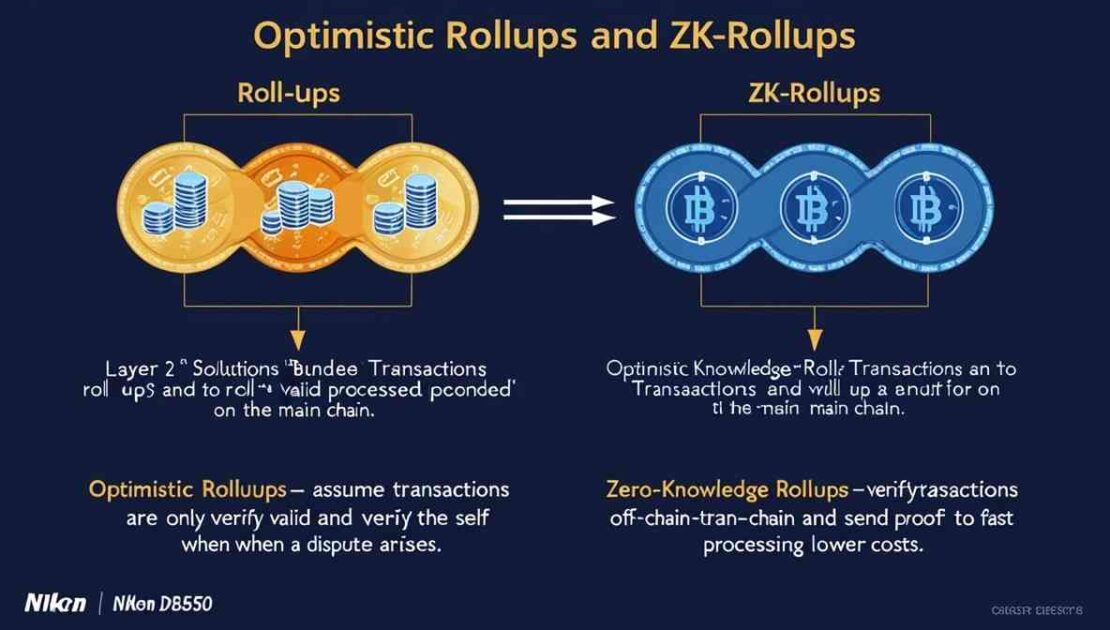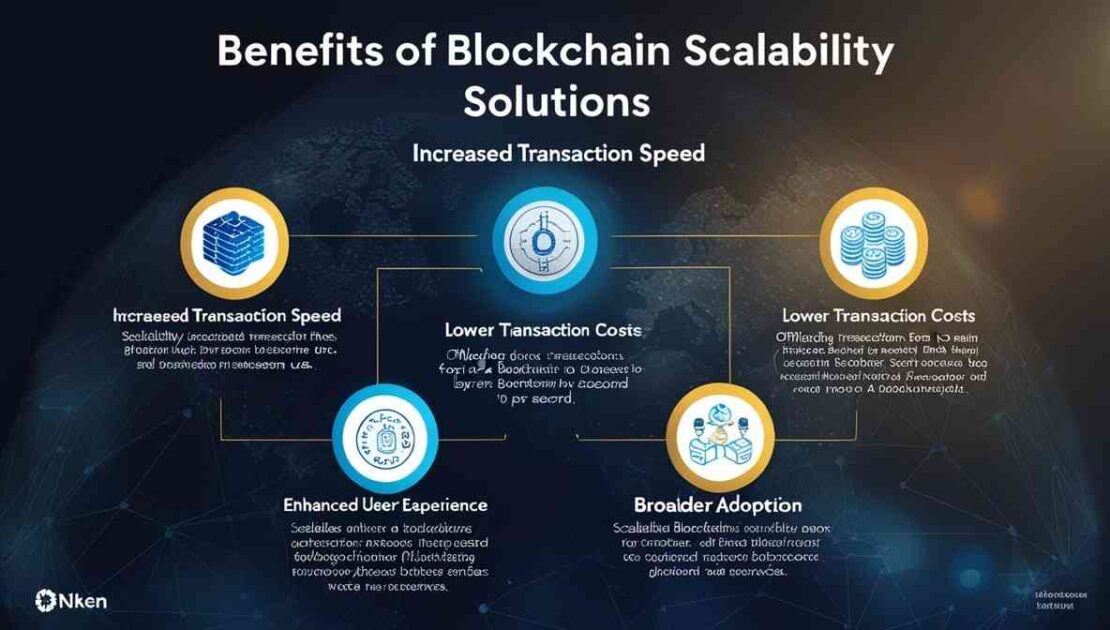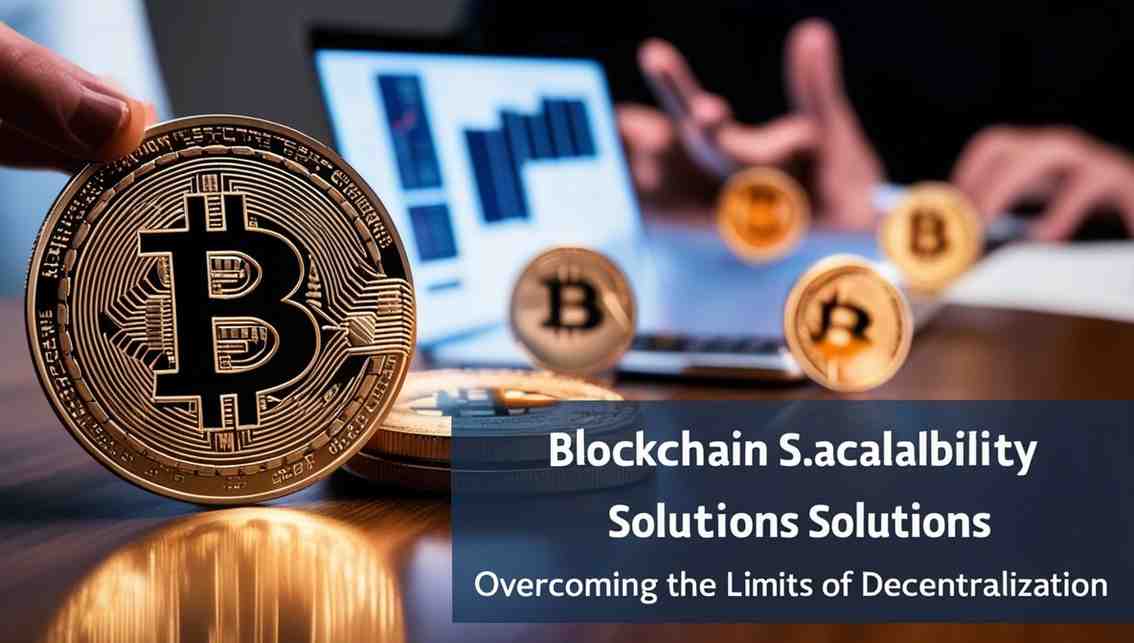Blockchain Scalability Solutions: Overcoming the Limits of Decentralization
Blockchain technology has revolutionized industries by offering secure, transparent, and decentralized systems. However, one of the most significant challenges for blockchain networks is scalability. As more users and transactions enter the blockchain ecosystem, networks like Bitcoin and Ethereum struggle with slow transaction speeds, high fees, and limited throughput. This is where blockchain scalability solutions come into play, designed to enhance performance and efficiency while maintaining decentralization.

What is Blockchain Scalability?
Scalability in blockchain refers to the network’s ability to handle an increasing number of transactions without compromising speed, security, or cost. As the demand for blockchain services grows, scalability becomes crucial for its broader adoption in industries such as finance, healthcare, and supply chain management.
Key Blockchain Scalability Solutions
Several solutions have emerged to address the scalability issue in blockchain. These range from Layer 2 scaling solutions to innovations in consensus mechanisms and data storage techniques.
1. Layer 2 Scaling Solutions
Layer 2 solutions work on top of the existing blockchain to offload some of the transaction processing, reducing the load on the main blockchain (Layer 1). This increases the number of transactions processed while reducing fees and improving speed.
- State Channels: State channels allow two parties to conduct multiple transactions off-chain and only settle the final transaction on the blockchain. This reduces the number of on-chain transactions, lowering fees and increasing speed. Examples include Bitcoin’s Lightning Network and Ethereum’s Raiden Network.
- Sidechains: Sidechains are separate blockchains connected to the main blockchain, where specific transactions can be processed without burdening the main chain. Polygon is an example of a sidechain solution that enhances Ethereum’s scalability.
2. Sharding
Sharding is a Layer 1 solution that divides the blockchain into smaller parts, called shards, which process transactions in parallel. Each shard operates independently, drastically increasing transaction throughput. Ethereum 2.0 is a notable example, incorporating sharding to enhance scalability while maintaining security and decentralization
3. Optimistic Rollups and ZK-Rollups
Rollups are Layer 2 solutions that bundle or “roll up” multiple transactions into a single transaction, reducing the number of transactions processed on the main chain.

- Optimistic Rollups assume transactions are valid and only verify them when a dispute arises.
- ZK-Rollups (Zero-Knowledge Rollups) verify transactions off-chain and send proof to the main blockchain, ensuring faster processing and lower costs.
Both solutions are used on Ethereum to significantly increase throughput without sacrificing security.
Difference between zk rollup and optimistic rollup
zk-Rollups offer enhanced security and reduced gas fees by utilizing advanced cryptographic proofs, though they require specialized knowledge in zero-knowledge technology. In contrast, optimistic rollups prioritize ease of implementation and quicker transaction throughput but depend on optimistic validation and fraud detection mechanisms for security. Here’s a table highlighting the key differences between zk-rollups and optimistic rollups:
| Feature | zk-Rollups | Optimistic Rollups |
|---|---|---|
| Verification Method | Uses zero-knowledge proofs (ZK-SNARKs or ZK-STARKs) for immediate proof of validity. | Assumes transactions are valid and challenges only occur if fraud is suspected. |
| Finality | Immediate upon proof submission. | Delayed due to challenge period (typically 1-2 weeks). |
| Security Model | Relies on cryptographic proofs for validation. | Relies on fraud proofs and challenge-response mechanisms. |
| Gas Efficiency | More efficient in terms of gas costs for batch verification. | Less gas-efficient due to the possibility of fraud challenges. |
| Complexity | More complex to implement due to cryptographic proofs. | Simpler but requires a challenge period for security. |
| Data Availability | Data must be available on-chain for verification. | It requires all transaction data to be posted on-chain. |
| Latency | Low latency (faster transaction finality). | Higher latency (due to the challenge period). |
| Withdrawal Time | Instant withdrawals possible after proof. | Withdrawal delays due to challenge period. |
| Use Cases | Ideal for applications requiring faster confirmation times. | Suitable for applications where delayed finality is acceptable. |
| Scalability | Highly scalable due to efficient proofs. | Scalable, but less so compared to zk-Rollups. |
This table should help clarify the main differences between the two types of rollups.
4. Improved Consensus Mechanisms
The consensus mechanism determines how a blockchain validates transactions. Traditional blockchains like Bitcoin use Proof of Work (PoW), which is secure but slow and energy-intensive. Newer consensus mechanisms, such as Proof of Stake (PoS) and Delegated Proof of Stake (DPoS), offer faster, more energy-efficient alternatives that can handle higher transaction volumes.
- Proof of Stake (PoS): Instead of miners competing to validate transactions, validators are chosen based on the number of tokens they hold. This reduces the computational effort and energy consumption required for validation. Ethereum 2.0 is transitioning to PoS to improve scalability.
- Delegated Proof of Stake (DPoS): In DPoS, users vote for a small group of delegates to validate transactions on their behalf. This reduces the number of nodes involved in transaction validation, speeding up the process.
5. Hybrid Blockchains
Hybrid blockchains combine the features of both public and private blockchains. By keeping sensitive transactions on a private network and using a public blockchain for verification, hybrid systems can improve scalability while ensuring privacy and security.
Benefits of Blockchain Scalability Solutions

- Increased Transaction Speed
Scalability solutions drastically reduce transaction times, allowing blockchain networks to process thousands of transactions per second, making them more viable for mainstream use. - Lower Transaction Costs
Offloading transactions from the main blockchain to Layer 2 solutions reduces congestion, leading to lower gas fees and making blockchain services more affordable. - Enhanced User Experience
Faster transaction times and lower costs improve the overall user experience, encouraging more people to adopt blockchain technology. - Broader Adoption
Scalable blockchains can support more complex applications such as decentralized finance (DeFi), gaming, and supply chain management, which require high throughput and low costs.
The Future of Blockchain Scalability
As blockchain technology evolves, scaling solutions will play a critical role in its mainstream adoption. The transition of Ethereum to Ethereum 2.0, the rise of Layer 2 solutions like Polygon and Optimistic Rollups, and advancements in consensus mechanisms will ensure that blockchain networks can support more users and applications while remaining decentralized and secure.
With these innovations, blockchain has the potential to disrupt industries on a larger scale, offering a future where decentralized systems are both scalable and efficient.
Conclusion
Blockchain scalability is essential for the continued growth and success of decentralized technologies. Solutions such as Layer 2 protocols, sharding, and improved consensus mechanisms are helping to overcome current limitations, making blockchain networks faster, more affordable, and accessible to a wider audience. As these innovations take shape, the blockchain ecosystem will be better equipped to meet the demands of future applications, driving forward the adoption of decentralized systems across industries.
Keywords: blockchain scalability, Layer 2 solutions, sharding, Proof of Stake (PoS), optimistic rollups, ZK-rollups, hybrid blockchains, Ethereum 2.0 scalability, blockchain transaction speed.
